Planting and caring for Wisteria can be a rewarding experience that adds color and fragrance to your garden. Growing and caring for Wisteria may seem daunting initially, but anyone can successfully cultivate this beautiful flowering plant with the right knowledge and care. Remember to choose a sunny location with well-drained soil, prune regularly to maintain its size and shape, and provide support as it grows.
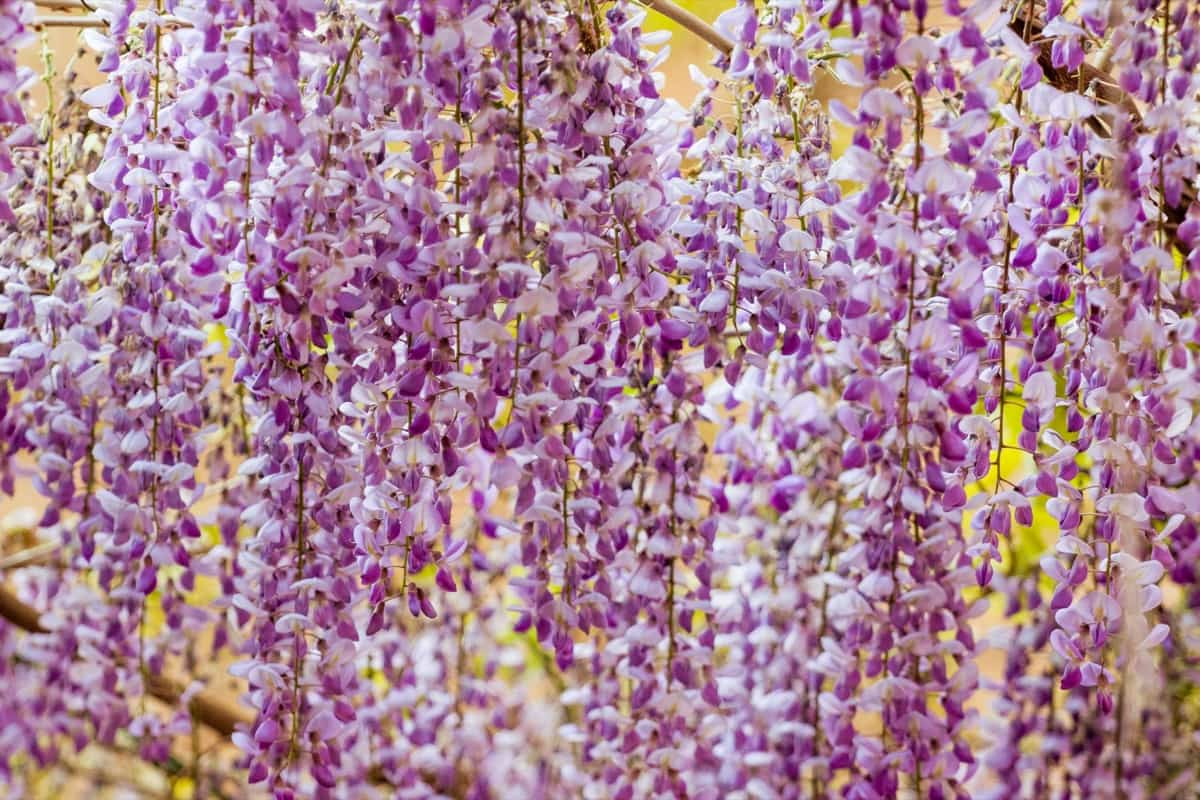
Planting and caring for Wisteria is a worthwhile investment that rewards you with stunning blooms year after year. Whether grown on an arbor or trellis or allowed to cascade down a wall or fence line, this lovely vine is sure to bring joy and delight to any garden setting.
How to Plant and Care for Wisteria
Best Time to Plant Wisteria for Optimal Growth
The ideal time to plant Wisteria is in late fall or early spring when temperatures are mild, and the ground isn’t frozen. Before planting, make sure that you select a spot with full sun and well-draining soil. Wisterias thrive in slightly acidic soil with a pH between 6 and 7. Gently loosen the roots from their container and place them into the hole at ground level.
Preparing the Soil for Wisteria Planting
Wisterias thrive in well-drained soils with moderate fertility, so preparing the soil before planting is essential. Choose a place that receives full sun or partial shade, which will help promote healthy growth and abundant blooms. It’s also important to ensure the soil has good drainage to prevent waterlogging, which can lead to root rot.
Before planting, loosen up the soil to a depth of at least 30 centimeters with a garden fork or tiller. This will improve air circulation and allow roots to penetrate easily into the ground. Add organic matter to increase fertility and drainage if you have heavy clay soil. Testing your soil pH levels is vital since Wisterias prefers slightly acidic soils with a pH between 6-7.
Providing Proper Support Structures for Wisteria Vines
Wisterias are known for their long and heavy vines that require sturdy support structures to grow on. It is important to choose a support structure that can handle the weight of the Wisteria vine as it grows and matures. One option is to train your Wisteria onto a pergola or arbor, providing ample space for the vine to spread out. You may also consider using an espalier technique, which involves training the vine against a flat surface such as a wall or fence.
In case you missed it: From Zucchini to Butternut: Discover the Top 13 Squash Varieties for Your Home Garden
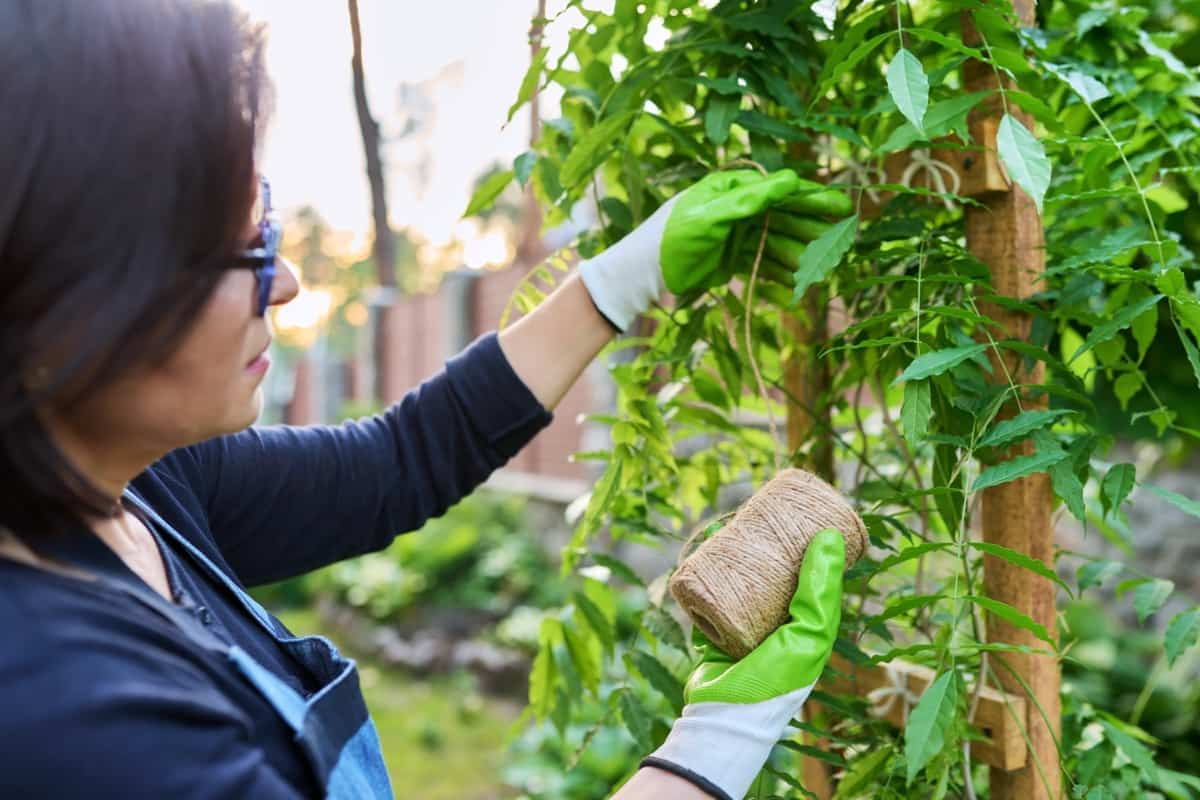
When installing your support structure, ensure it is securely anchored into the ground or attached firmly to your home’s exterior. This will prevent any damage caused by strong winds or heavy rain. You must also regularly prune your Wisteria vines so they don’t become too heavy for their support structure. Trimming back any excess growth will keep them manageable and encourage healthy flowering.
Watering and Irrigation Tips for Wisteria Plants
Watering and irrigation are essential aspects of caring for Wisteria plants. These vines require regular watering, especially during the growing season, to maintain healthy growth and blooming. Wisterias prefer well-drained soil that is moist but not waterlogged. Increasing watering frequency may be necessary to prevent plant stress during dry periods or hot weather. When irrigating Wisteria plants, avoid getting water on their foliage, as this can lead to fungal diseases. Instead, direct water at the base of the plant where its roots will absorb it.
Fertilizing Schedule for Healthy Wisteria Growth
Fertilizing is a crucial aspect of Wisteria care that should not be overlooked. A well-fed plant will produce healthy growth and abundant blooms. However, over-fertilization can lead to excessive foliage growth at the expense of flowers. Generally, it’s best to fertilize Wisterias once in early spring, before new growth, and after flowering in late spring or early summer.
In case you missed it: How to Identify and Treat Cucumber Fungal Diseases: Best Strategies Explained
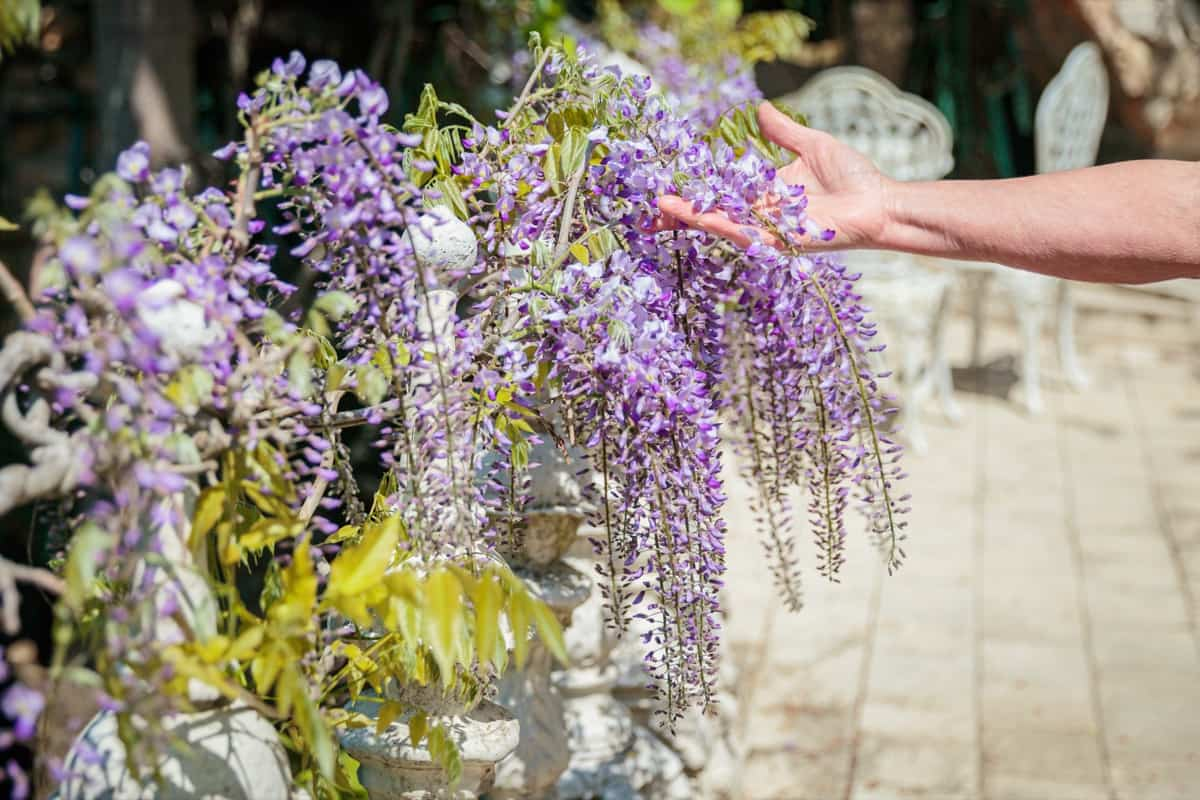
When applying fertilizer, distribute it evenly around the base of the plant and water thoroughly afterward. If your soil is deficient in certain nutrients, such as iron or magnesium, you may need to supplement with specific fertilizers designed for those deficiencies. Remember that too much fertilizer can harm your Wisteria plants rather than help them grow better. It’s always best to follow instructions carefully when using fertilizer on your plants.
Pruning Techniques to Shape and Control Wisteria Vines
Pruning your Wisteria vines is important to maintain their shape and control their growth. It’s recommended to prune twice a year: once in the winter while the plant is dormant and again in mid-summer after flowering. During winter pruning, remove any dead or damaged wood and any lateral shoots that have grown from the main stem. Cut back all remaining laterals to two or three buds from the previous season’s growth.
This encourages new growth for blooms in spring. Summer pruning involves removing excess foliage and side shoots that are out of control. Focus on trimming back long tendrils that can damage nearby structures or become tangled with other plants. Ensure you don’t cut off too much during summer pruning, as it could affect blooming next season.
Keep an eye on how much foliage you’re taking away and aim to tidy up rather than drastically change its form. Always use sharp tools when pruning Wisteria vines, as blunt ones can crush stems instead of making clean cuts, leading to faster healing times for healthy regrowth. By practicing regular Wisteria vine maintenance through proper pruning techniques, you can keep your plant under control while promoting optimal health and beautiful blooms every year.
Managing Pests and Diseases Affecting Wisteria Plants
One of the biggest challenges in growing Wisteria is managing pests and diseases. These can cause significant damage to your plants if they are not recognized and treated promptly. The most common pest affecting Wisterias include aphids, spider mites, scale insects, and Japanese beetles. You can control these pests by regularly inspecting your plants for signs of infestation and using natural or chemical insecticides when necessary.
In case you missed it: Discover the Top 19 Best Broccoli Varieties for Home Garden Abundant Harvests
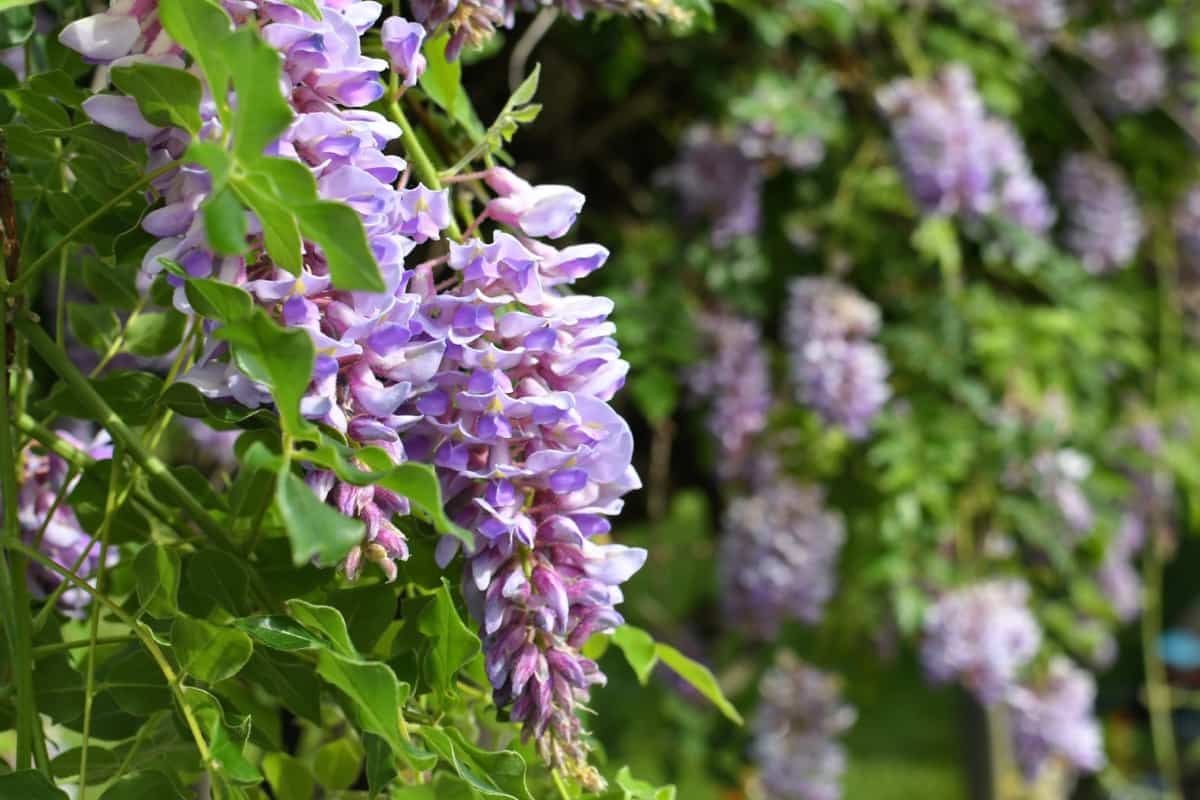
Diseases such as powdery mildew, root rot, crown gall disease, and leaf spot concern Wisterias. Proper care practices such as avoiding overwatering, maintaining good drainage in the soil around the plant’s roots, and removing infected leaves or parts of the plant immediately upon noticing them will prevent its spread.
If you notice any symptoms of pest or disease infestations on your Wisteria plants, like wilting flowers or foliage discoloration, then immediately treat it with proper solutions. By being vigilant about pest control measures and following best gardening practices, you can keep your beautiful Wisteria vines healthy throughout their lifespan.
Protecting Wisteria from Frost and Cold Temperatures
Wisteria is a beautiful and hardy plant that can survive in various weather conditions. However, it is susceptible to frost and cold temperatures, damaging or killing the plant if not properly protected. To protect your Wisteria from frost and cold temperatures, you must first understand when these conditions will most likely occur. Generally, the best time to expect frost and freezing temperatures is late fall or early winter.
One way to protect your Wisteria from these harsh conditions is by covering it with mulch. Mulching helps insulate the plant’s roots, keeping them warm and preventing freezing. Another effective method for protecting Wisteria from frost is using burlap or other breathable fabrics as covers over the foliage.
These materials help keep heat trapped around the plant while allowing air circulation, reducing moisture buildup that could lead to mold growth. Taking steps to protect your Wisteria from frost and cold temperatures can go a long way toward ensuring its health and longevity. You can enjoy gorgeous blooms on this stunning vine with proper care throughout all seasons for many years.
Promoting Blooming in Wisteria through Proper Care
Promoting blooming in Wisteria is a top priority for any gardener looking to add this stunning plant to their landscape. Proper care is key in ensuring optimal growth and the development of vibrant, colorful blooms. One important factor in promoting blooming is sunlight. Wisteria plants need direct sunlight, ideally at least six hours daily.
Ensure you choose a planting location with adequate sun exposure throughout the day. Another critical element in promoting blooming is soil quality. Wisterias thrive in well-draining soils with a pH between 6.0 and 7.0. Adding compost or organic matter can help improve soil quality and provide essential nutrients to support healthy growth.
In case you missed it: Top 11 Beautiful Color Changing Flowers
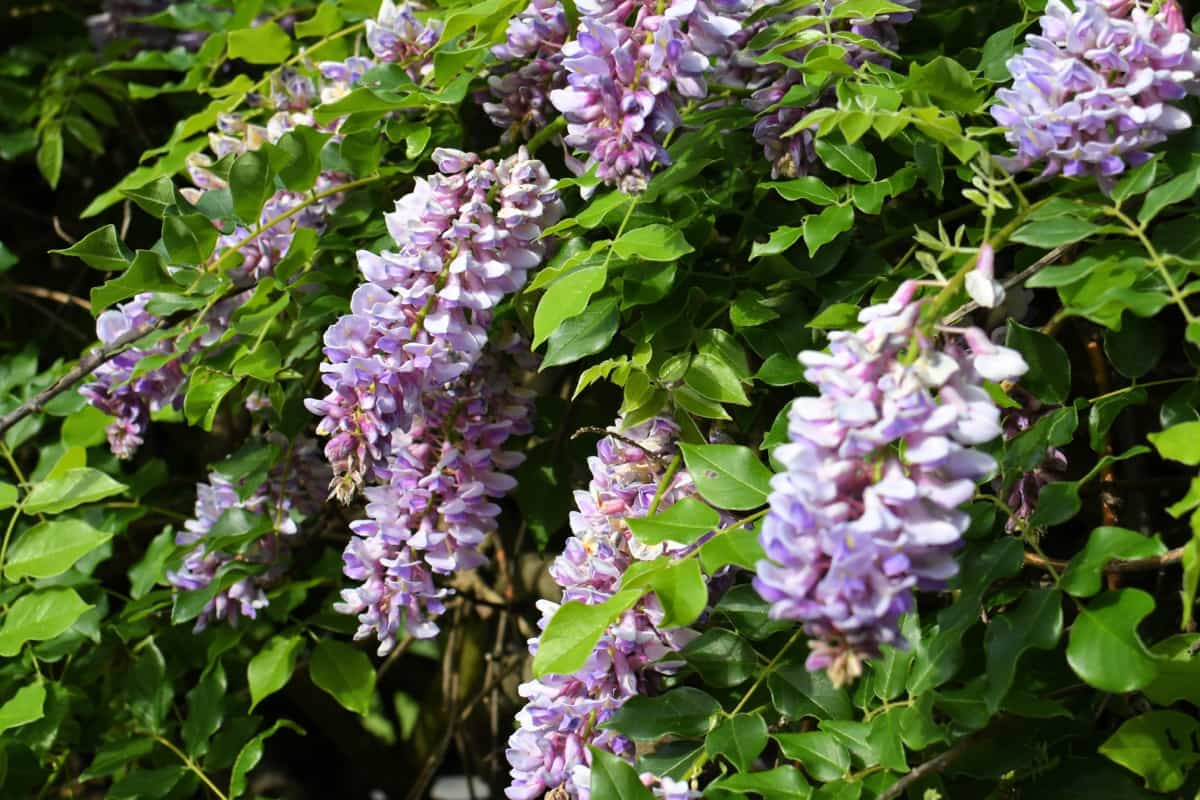
Pruning also plays an essential role in promoting blooming by encouraging the formation of new branches and buds while removing dead or damaged plant parts. Prune Wisteria during its dormant season, typically from late fall through early spring, before new growth begins. Additionally, providing proper support structures for your Wisteria vines will allow them to grow strong and healthy enough to produce abundant blooms year after year.
Harvesting Wisteria Seeds for Propagation
Harvesting Wisteria seeds is an exciting and rewarding process for gardeners who want to propagate their plants. The best time to harvest the seeds is in the late summer or early fall when the pods have turned brown and are dry. Look for seed pods hanging down, plump, and dark brown. These are typically found towards the end of branches. Once you’ve identified a suitable pod, use scissors or pruning shears to remove it from the vine carefully.
Be sure not to damage any other parts of the plant while doing so. Next, place your harvested pods into a paper bag or envelope before storing them in a cool, dry location until they’re ready for planting. You can gently crush some of these dried seedpods with your hands over the soil where you would like propagation. When ready to sow your collected Wisteria seeds next spring after stratification- soak them overnight & then follow instructions on planting depth etc.
Identifying and Addressing Common Wisteria Problems
Identifying and addressing common Wisteria problems is crucial to maintain the plant’s health and beauty. One of the most common issues with Wisterias is poor flowering. If your Wisteria isn’t blooming, it could be due to improper pruning or lack of sunlight. Ensure you’re pruning at the right time of year and that your plant gets at least six hours of direct sunlight daily.
Another problem with your Wisteria is pests such as aphids, spider mites, and scale insects. Regularly inspecting your plants for these pests can help catch infestations early on before they cause too much damage. Wisterias are also prone to fungal diseases like powdery mildew, which creates a white powdery coating on leaves and stems. To prevent this issue, ensure adequate spacing to promote good air circulation and avoid overhead watering.
Overwatering can lead to root rot in Wisterias. Always check soil moisture levels before watering; it’s time to water if the top inch feels dry. They shouldn’t get enough water than drowning them with too much water. Being vigilant about identifying potential issues in your Wisteria plants’ growth cycle and the proper care techniques mentioned earlier will ensure healthy, blooming, beautiful vines every spring.
In case you missed it: Thriving Under Glass: Unleashing the Power of Organic Greenhouse Growing Techniques
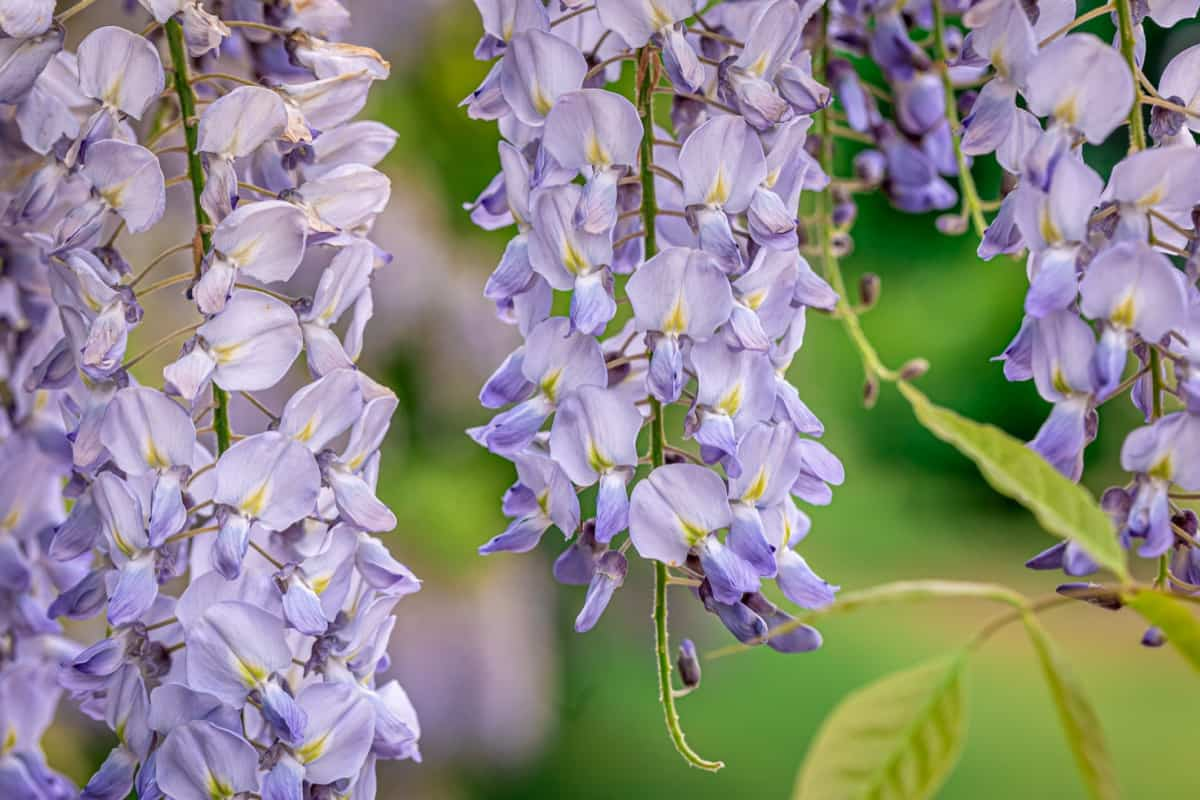
Conclusion
Planting and caring for Wisteria requires patience and attention to detail. However, the result is a stunningly beautiful plant with cascading blooms that will take your breath away. Whether you grow this plant on an arbor or trellis in your garden, Wisteria will surely become one of your favorites. Remember to always research your chosen variety’s specific needs before planting it to give it its best chance at thriving. With care and attention, you’ll be rewarded with a beautiful display of color every year.
- How to Grow Hibiscus from Flower
- Plantation Ideas for Home Decoration: A Beginners Guide
- Flower Garden Designs and Layouts for Beginners
- Planting and Spacing Techniques in Papaya: A Beginner’s Guide
- Growing Gold: Essential Techniques for Planting Pineapples
- How to Make Kalanchoe Plant Bushy: Home Remedies and Solutions
- 11 Reasons Why Your Gardenia is Not Blooming: Home Remedies and Solutions
- Eco Elegance: The Guide to Designing a Drought-Tolerant Landscape
- Gardening on a Slope: Strategies for Hillside Landscaping
- Nourish and Flourish: Top Organic Mulches for Thriving House Plants
- Everything You Want to Know about Indian Mogra Flower: Discover Uses and Growing
- Green Thumb Success: Expert Tips for Cultivating Greenhouse Pumpkins All Year Round
- Maximize Growth & Flavor: The Ultimate Guide to Companion Planting in Herb Gardens
- How to Control Rhododendron Problems Naturally: Home Remedies and Organic Ways to Fix Them
- Natural Magic: The Remarkable Benefits of Cinnamon for Plants
- Best Steps to Revive Dying Tulip with Natural and Organic Treatment
- 10 Reasons Why Your Angel Trumpet is Not Blooming: Remedies and Treatment
- How to Fix Periwinkle Leaf and Flower-Related Problems: Natural Remedies and Solutions
- How to Fix Zinnias Leaf and Flower Problems: Discover Natural and Home Remedies
- Organic Steps to Induce Lemon Tree Flowers: A Comprehensive Guide
- Bloom Booster: Crafting the Perfect Homemade Bougainvillea Fertilizer
- Optimizing Growth: A Guide to Applying NPK Fertilizer for Potted Plants
- 10 Best Homemade Fertilizers for Rubber Plant: DIY Recipes and Application Method
- How to Boost Female Pumpkin Flowers: Effective Steps for More Flowers and High Yields
- Transform Your Indoor Garden: Top Benefits of Pink Salt for Houseplants
- 10 Best Homemade Fertilizers for Peacock Plants (Calathea): Easy DIY Guide
- Unlock Blooms: 9 Reasons Why Your Potted Chrysanthemum is Not Blooming
- 8 Reasons Why Your Potted Hibiscus is Not Blooming: Fix it with Simple Solutions
- Unlock Blooms: 9 Key Reasons Your Potted Frangipani Won’t Flower
- 10 Reasons Why Is My Ice Plant Not Blooming: Remedies and Treatment
- 10 Reasons Why My Potted Hydrangea Not Blooming: Treatment and Remedies
- 10 Reasons Why is My Wisteria Not Blooming: Remedies and Treatment
- 10 Reasons Why is My Goldfish Plant Not Blooming: Remedies and Treatment
- Maximize Your Space: Ultimate Guide to Balcony Gardening with Grow Bags
- 10 Reasons Why Your Iris is Not Blooming: Remedies and Treatment
- 10 Reasons Why Your Anthurium Plant is Not Blooming: Treatment and Remedies